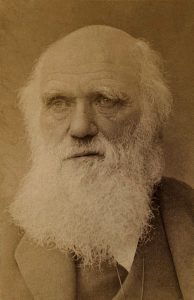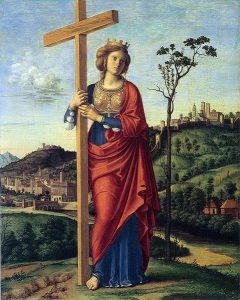Many people know of the Mexican holiday Día de Los Muertos, which is filled with vibrant colors and intricately painted faces. What many people don’t know is that this holiday originated over 3000 years ago with the Aztec empire. The Spanish Conquistadors first recorded a Día de Los Muertos celebration during the 16th century. When the Aztecs had begun this tradition, they weren’t remembering loved ones who passed, but they were worshiping the queen of the underworld and protector of the dead.1

This Aztec queen was Mictecacihuatl, “Lady of the Dead,” Queen of Mictlan.2 According to Aztec legend, Mictecacihuatl was sacrificed as an infant and placed in the underworld to become the wife of Miclantecuhtl, the king of the underworld. In the underworld, her role was to watch over the bones of past lives, which would be used to create new life in the living world. However, in order for the bones to be able to create new life, they needed to be stolen from Mictecacihuatl to be brought to the living world. As their protector, part of her own life would be carried with the stolen bones. Even after the bones were stolen, she would continue her duty to protect them by returning to the living world every year to make sure the bones were being properly taken care of. When the time came for her to return to the living world, the Aztecs celebrated Mictecacihuatl’s return with death festivals and traditional dances, to honor her for her protection of the bones that created life and to seek protection for those who died.3

The Aztecs celebrated Día de Los Muertos much differently than it is celebrated today due to the Spanish conquistadors and Catholicism. The Spanish changed the lives of the indigenous peoples wherever they went, from taking land for the Spanish throne to converting people to Catholicism. Many traditions changed, including those of Día de Los Muertos.4 The Aztecs laid out offerings for the King and Queen of the Underworld for the whole month of August, and the Spanish were the first outsiders to witness this honoring of Mictecacihuatl by the Aztecs. Not long after the Spanish exposure to this festival, the Spanish combined the Aztec tradition with Catholicism. Syncretism, the blending of Spanish and indigenous beliefs and practices, combined the Aztec traditions of Día de Los Muertos with the Spanish traditions of All Saint’s Day and All Souls Day.5 Some examples of syncretism between Catholicism and Día de Los Muertos are the symbols that are most recognizable with Día de Muertos, such as decorated skulls and skeletons, and the Spanish character “La Catrina,” who represents Mictecacihuatl.6 The merging of Catholicism with the Aztec religious beliefs began the evolution of how Día de Los Muertos, transforming how it is celebrated today.

Despite that the name Día de Los Muertos translates to Day of the Dead in English, the holiday is actually the celebration of life. Día de Los Muertos doesn’t focus on death and mourning of a loved one. It’s seen as a happy celebration where family members of all generations, deceased and alive, can be together as one. The traditions of this holiday have changed from honoring the queen of the underworld Mictecacihuatl to honoring those who have passed.7 It’s a time of colorful festivals and parades, beautifully painted colorful skulls, marigold flowers, decorated ofrendas, grave site visits and the smells of traditional Mexican foods and incense in the air. Although it is primarily celebrated in Mexico, some parts of the United States, especially cities and towns on the Mexican border, have adopted the tradition and celebrate the remembrance of their deceased loved ones.
- MasterFILE Complete, 2008, s.v. “Día de los Muertos, by Benjamin Perea. ↵
- Sin Jones, Mictecacihuatl, Santa Muerte, 2010, 1-16. ↵
- Sin Jones, Mictecacihuatl, Santa Muerte, 2010, 1-16. ↵
- Mark Lacy, Origins of El Día de Los Muertos: The Prehispanic Festival of the Dead Defies Cultural Invasions of Mexico, (History Institute for Culture), 1. ↵
- Mark Lacy, Origins of El Día de Los Muertos: The Prehispanic Festival of the Dead Defies Cultural Invasions of Mexico, (History Institute for Culture), 1. ↵
- Mark Lacy, Origins of El Día de Los Muertos: The Prehispanic Festival of the Dead Defies Cultural Invasions of Mexico, (History Institute for Culture), 1. ↵
- Christina Zarate, Día de Los Muertos, (Smithsonian National Museum of American History), 2-7. ↵



114 comments
Sara Guerrero
My family and I celebrate Day of the Dead and it is a beautiful tradition and it’s very uplifting as well. I didn’t know that this tradition dated back to Atac times and at first it was an offering for the God and Goddess of the underworld. The way that this tradition changed and adapted with Catholicism shows the culture shock it has received and trying to fit in better to a modern society. I love this article and the Mexican culture is very beautiful!
Micheala Whitfield
I recently got into Dia de Los Muertos due to my significant other and his Mexican heritage. What strikes me the most about this holiday is the different outlook on death. It celebrates the life of a human individual, it is not about mourning the person. Dia de Los Muertos is an amazing way to celebrate the others that are before us and have passed. I honestly had no idea that the original origin was Aztec nor did I know it was to celebrate the Lady of the Dead. To be honest, with the time line, it would have been nice to celebrate the Lady who passes the souls beyond and brings souls to the world on top of all souls day. Great article.
Anthony Coronado
I could imagine this being not so festive before the sugar skulls. I saw a movie called ‘Apocalypto’ and they had a scene from a Mayan themed sacrifice and they had capture enemies sacrificed to their gods. From this caption, it seemed that the Mayans and the Aztecs had the same beliefs in human sacrifices to honor their gods, for their general wellbeing in battle, etc. I do not know the geographical semblance between Mayans and Aztecs to present-day Mexico.
Jacqueline Mendez
Dia de Los Muertos has been a big part of my life since I was little. I remember going to the local university in Cd. Juarez and it was one of the best days to look forward to all year. I believe Dia de Los Muertos is a very beautiful way to remember our ancestors and our loved ones that have past away. This part of the Mexican culture is truly amazing and beautiful.
Kimberly Parker
El Día de Los Muertos, the Day of the Dead. It is the one day every year when people get to remember and honor their deceased loved ones, and it is celebrated all throughout Mexico. That is what most people think about when El Día de Los Muertos is mentioned, not that it was once used to worship an underworld goddess. This article was very interesting to read, and I enjoyed learning more about it.
Victoria Davis
I knew about Day of the Dead from high school and we always celebrated it. This article explains that it is much more than a small celebration. It is interesting to see how times have changed from celebrating this holiday. There was a lot of information on the tradition and how it descended from a combination of Aztec and Catholicism.
Emmanuel Ewuzie
The only reason why I know of the Day of the Dead is thanks to my 3 years of Spanish that I took in middle school and high school. We always had a little party in class in celebration. I always saw it as a excuse to eat food in class with my classmates but now I realize there’s alot more to the Day of the Dead than I had originally thought. To think it dates back to the Aztecs is astounding.
Sebastian Azcui
On my recent trip to Mexico I saw many of these decorations all around. The day of the dead is something very big in Mexico. I had no idea that the day of the dead is to worship an underworld goddess. This makes Mexican culture very unique and rich. Religion is very involved in Mexican culture, and the way that they connected the Aztec beliefs and Catholicism is amazing.
Octaviano Ibarra
It was interesting to learn about the true origin of Dia de los Muertos and how the Aztecs celebrated and looked at this holiday. What I really enjoyed other than learning the original way Dia de los Muertos was celebrated and look at as was not drastically changed or modified. The Spanish instead combined the two and still staying relatively close to how the Aztecs celebrated Dia de los Muertos.
Roberto Rodriguez
I have never actually celebrated the day of the dead, but it has always been very interesting to me. It is a very beautiful and vibrant celebration that everyone should at least have some sort of knowledge about. I had no idea how old the tradition was and it is very interesting how it adapted from a combination of Aztec and Catholicism. It is great to know that it found a way to survive throughout time and that it is completely integrated into hispanic culture. Great article!